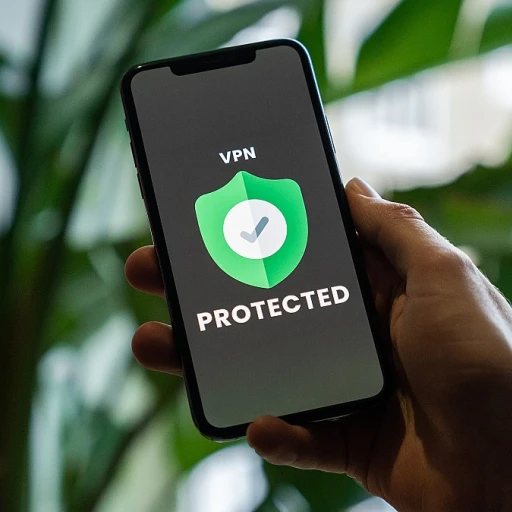
Understanding Business Continuity in SaaS
Grasping the Essence of Business Continuity in SaaS
In the dynamic world of Software as a Service (SaaS), ensuring uninterrupted service delivery is paramount. Business continuity is not just a buzzword; it's a critical function that safeguards your enterprise against unexpected disruptions. Whether it's a natural disaster, data loss, or a cyber incident, having a robust continuity plan in place is essential for operational resilience.
Business continuity in SaaS involves a comprehensive approach to risk management and disaster recovery. It requires a well-structured continuity plan that outlines the steps to be taken in the event of a disruption. This plan should include key features such as data backup, real-time monitoring, and incident management to ensure a swift return to normal operations.
Continuity software plays a vital role in this process by providing the necessary tools for effective continuity management. These tools help in conducting a business impact analysis, which is crucial for understanding the potential risks and their implications on your operations. By identifying these risks, you can develop a recovery plan that minimizes downtime and protects your data.
Moreover, compliance with industry standards and regulations is a key aspect of business continuity planning. Ensuring that your continuity plans align with these requirements not only enhances your operational resilience but also builds trust with your stakeholders.
For those interested in exploring the latest trends in this field, you can delve deeper into the potential of voice recognition software as part of your continuity strategy. This technology can offer innovative solutions for enhancing communication and coordination during a crisis.
Key Features to Look for in a Business Continuity App
Essential Features for Robust Business Continuity
When selecting a business continuity app for your SaaS enterprise, it's crucial to focus on features that ensure operational resilience and effective disaster recovery. These features are the backbone of a robust continuity plan, helping to mitigate risks and protect your data.
Data Backup and Recovery
One of the primary functions of continuity software is to provide reliable data backup and recovery options. In the event of data loss, having a solid recovery plan is essential. Look for apps that offer real-time data protection and automated backup solutions. This ensures minimal disruption and quick return to normal operations.
Risk Management and Impact Analysis
Effective risk management is a key component of any business continuity plan. The app should facilitate comprehensive risk assessments and impact analysis, allowing you to identify potential vulnerabilities. This helps in crafting a continuity plan that addresses specific risks and enhances operational resilience.
Compliance and Security Features
Security considerations are paramount when evaluating continuity management software. Ensure the app complies with industry standards and regulations. Features like encryption, access controls, and incident management tools are vital for maintaining data integrity and compliance.
Integration and Compatibility
Compatibility with your existing SaaS infrastructure is another critical factor. The app should seamlessly integrate with your current systems, ensuring smooth continuity planning and execution. This integration is essential for effective crisis management and operational continuity.
Scalability and Flexibility
As your business grows, your continuity needs will evolve. Choose a platform that offers scalability and flexibility, allowing you to adapt your continuity plans as required. This ensures that your disaster recovery strategies remain effective over time.
For more insights on navigating the ethical landscape of software development, you can explore this strategic approach to ensure your business continuity solutions align with ethical standards.
Evaluating App Compatibility with Your SaaS Infrastructure
Assessing Infrastructure Compatibility
When selecting a business continuity app for your SaaS enterprise, evaluating its compatibility with your existing infrastructure is crucial. This ensures seamless integration and minimizes disruptions during implementation. Here are some key considerations:
- Platform Compatibility: Ensure the app supports your current software stack and integrates smoothly with your existing tools. This includes checking compatibility with your operating systems, databases, and cloud services.
- API Integration: The app should offer robust API support to facilitate data exchange and automation. This is essential for maintaining operational resilience and ensuring real-time data protection.
- Scalability: As your business grows, your continuity software should scale accordingly. Evaluate whether the app can handle increased data volumes and user loads without compromising performance.
- Customization Options: Look for apps that offer customization to align with your specific business continuity plans and risk management strategies. This flexibility can enhance your disaster recovery efforts.
Testing and Validation
Before fully integrating a business continuity app, conduct thorough testing to validate its performance within your SaaS infrastructure. This involves:
- Simulating Disaster Scenarios: Test the app's disaster recovery capabilities by simulating potential events. This helps identify any weaknesses in your continuity plan and ensures the app's effectiveness in real-world situations.
- Compliance Checks: Verify that the app meets industry standards and compliance requirements. This is vital for protecting sensitive data and maintaining trust with your clients.
- Performance Monitoring: Implement monitoring tools to track the app's performance over time. This allows you to address any issues promptly and maintain operational continuity.
For more insights on building effective solutions, explore our guide on building effective frontend solutions for headless CMS.
Security Considerations for Business Continuity Apps
Ensuring Robust Security in Business Continuity Apps
When selecting a business continuity app, security considerations are paramount. The software must safeguard your data and ensure operational resilience in the face of potential threats. Here are some key aspects to evaluate:
- Data Protection: The app should offer robust data protection features, including encryption and secure backup options. This ensures that sensitive information remains safe from unauthorized access and data loss.
- Compliance: Verify that the app complies with industry standards and regulations relevant to your business. Compliance with standards like GDPR or HIPAA is crucial for maintaining trust and avoiding legal repercussions.
- Disaster Recovery: A comprehensive disaster recovery plan is essential. The app should facilitate quick recovery of data and systems, minimizing downtime and business impact.
- Risk Management: Effective risk management features help in identifying potential threats and planning accordingly. The app should support real-time risk assessment and incident management.
- Continuity Planning: Ensure the app supports detailed continuity planning, allowing you to create and manage continuity plans tailored to your specific needs.
Security is not just about protecting data; it's about ensuring the continuity of your business operations in any event. By focusing on these security considerations, you can enhance your business's resilience and ensure a swift return to normalcy after a disruption.
Cost-Benefit Analysis of Business Continuity Solutions
Weighing the Costs and Benefits of Continuity Solutions
When considering the implementation of a business continuity app for your SaaS enterprise, conducting a thorough cost-benefit analysis is crucial. This process helps in understanding the financial implications and the potential return on investment (ROI) of deploying continuity software. Here’s how you can approach this analysis:
- Initial Investment vs. Long-term Savings: Evaluate the upfront costs of acquiring and setting up the continuity management software against the long-term savings it offers. Consider the reduction in potential data loss and operational downtime during a disaster recovery event.
- Risk Management and Compliance: Assess how the app enhances your risk management strategies and compliance with industry standards. Effective continuity planning can mitigate risks and ensure that your business meets regulatory requirements, thus avoiding costly penalties.
- Impact on Business Operations: Analyze how the app's features, such as real-time data backup and incident management, contribute to maintaining business operations during disruptions. This operational resilience is key to minimizing business impact.
- Pros and Cons of Different Platforms: Compare various continuity software platforms to identify the one that aligns best with your business continuity plan. Consider factors like ease of integration, user-friendliness, and support services.
- Return on Investment: Calculate the potential ROI by estimating the financial benefits of reduced downtime and improved data protection against the costs involved in implementing the continuity plan.
By carefully analyzing these aspects, businesses can make informed decisions that not only protect their data and operations but also enhance their overall resilience in the face of unforeseen events.
Case Studies: Successful Implementation of Business Continuity Apps in SaaS
Real-World Success Stories in Business Continuity
In the rapidly evolving landscape of SaaS enterprises, implementing a robust business continuity plan is not just a precaution but a necessity. Here, we explore some real-world examples of successful business continuity app implementations that highlight the importance of key features and strategic planning.
Case Study 1: Enhancing Data Protection and Recovery
A leading SaaS provider specializing in customer relationship management faced significant challenges with data loss and recovery. By integrating a comprehensive business continuity app, they were able to enhance their data protection strategies. The app offered real-time backup and disaster recovery functions, ensuring minimal data loss during unexpected events. This strategic move not only fortified their risk management framework but also improved their operational resilience.
Case Study 2: Streamlining Incident Management
Another SaaS company, focused on financial services, prioritized incident management and compliance. They adopted a continuity management software that provided a centralized platform for incident tracking and response. This software's key features included automated alerts and a detailed continuity plan, which streamlined their crisis management processes. The result was a significant reduction in response time and improved compliance with industry regulations.
Case Study 3: Cost-Effective Continuity Planning
A mid-sized SaaS enterprise in the e-commerce sector faced budget constraints while planning for business continuity. They conducted a thorough cost-benefit analysis and opted for a planning software that offered essential features without unnecessary costs. This decision allowed them to maintain a robust continuity plan that included risk assessment and impact analysis, ensuring business continuity without straining their financial resources.
These case studies underscore the importance of selecting the right business continuity app tailored to specific needs and infrastructure. By focusing on key features such as data protection, incident management, and cost-effectiveness, SaaS enterprises can enhance their resilience and ensure seamless operations in the face of disruptions.















